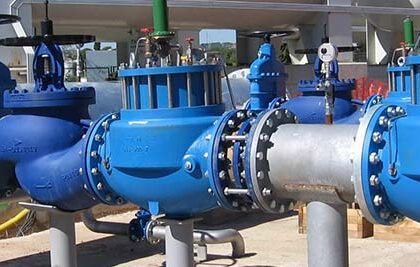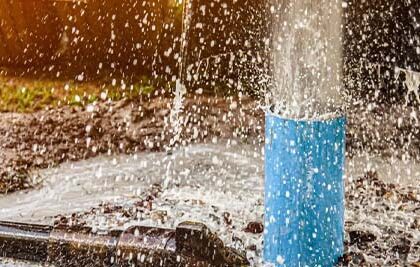Rainwater harvesting is a technology used to collect, convey, and store rainwater for later use from relatively clean surfaces such as a roof, land surface, or rock catchment. It refers to collection and storage of rainwater that runs off from roof tops, parks, roads, etc. The water is generally stored in a rainwater tank or directed to recharge groundwater, a process known as artificial aquifer recharge or managed aquifer recharge.
On the other hand, rain water harvesting is now used for flood prevention, mostly in built up urban areas, and we are experts at designing and implementing solutions in this regard. Rainwater harvesting technologies can prevent flooding, as they collect water from rainfall first, taking the pressure off nearby storm drains.
The practice of collecting rainwater from rainfall events can be classified into two broad categories: land-based and roof-based.
Our rainwater harvesting services encompass but are not limited to the following.
- Consultancy for design of national and municipal rainwater harvesting strategies, groundwater banking interventions, artificial aquifer recharge programs, water tank and leakage monitoring solutions etc.
- Consultancy for feasibility assessment, detailed engineering design, and construction of groundwater aquifer recharge infrastructure.
- Operation and maintenance of rainwater harvesting infrastructure i.e., periodic cleaning and disinfection of gutters and water tanks, soak pit dredging, routine water quality sampling and testing, etc.
- Installation of rainwater harvesting tanks, both above and underground tanks.
- Undertaking of reservoir water audits, water loss control programs, and rehabilitations.
- Design and construction of rainwater collection and management systems.
- Design and implementation of above and underground stormwater management facilities such as detention ponds, stormwater parks, rain gardens, drainage channels, stormwater regulating and percolation pits, etc.
At HYDRO CONCEPTS (U) LTD, we help you design and implement rainwater harvesting systems using recommended technologies such as first flush diverters, rooftop rainwater filters, and water treatment systems. Do you want to harvest rainwater for irrigating your compound or lawn?
Are you doing it for later domestic or animal use? Is it for use on fountains? Whatever the end goal you have in mind, engage us and we will ensure to have it designed and implemented tailored to your needs. Backed by decades of experience, we provide support, knowledge, and product selection needed to efficiently harvest rainwater. Our team of experts provides professional consultation and support at every step of the process
First Flush Diverter Systems
Whenever it starts to rain, dirt and debris from catchment surfaces and collection devices will be washed into the conveyance systems (e.g., down-pipes). Relatively clean water will only be available sometime later in the storm. This first batch of each rainfall is known as “first flush/foul flush”, and should be diverted from the storage tank.
Several manual and automated means of selectively collecting clean water for the storage tanks exist. One such method is the use of constant and adjustable volume first flush diverters.
How it Works.
First flush diverters are installed at each downspout that supplies water to the tank, or where the downspouts enter the tank. They utilise a dependable ball and seat system. As the water level rises in the diverter chamber, the ball floats and, once the chamber is full, the ball rests on a seat inside the diverter chamber, preventing any further water from entering.
The subsequent flow of water is then automatically directed along the pipe system to the tank. A floating ball valve stops the diverted water from washing back out of the diverter and into the tank. A small drain hole near the end of the diverter pipe allows the diverted water to run out slowly so that the diverter is empty and ready for the next rainfall. A threaded cap is placed at the end of the diverter pipe to allow for periodic removal of leaves and other debris (The first flush pipe should be bigger than the inlet pipe, to ensure sufficient closure/sealing).
A few reasons why a first-flush diverter can make a big difference in your rainwater catchment system:
- Diverters will allow leaves, debris, and faecal matter to wash away, keeping your tank water cleaner.
- The cleaner the water going into your system, the better quality the water will be.
- First-flush devices typically require no power, so they are a low-cost, low-tech way to improve water quality significantly.
The diverted water is discarded or used in applications that do not require high quality water. Hydro Concepts (U) Ltd has earned a mark of distinction as a national leader in smart rainwater harvesting technologies, and is thus your trusted partner in undertaking the installation of pre filtration systems like first flush diverters.
Rooftop Rainwater Filters
We install and retrofit rooftop rainwater filters to new and existing rainwater harvesting systems. The rooftop rainwater filter is a simple, low tech, low maintenance technology that filters any physical impurities in your harvested rainwater, prior to storage. With an SS304 micron filter, our rainwater filters are able to filter out physical impurities that are as tiny as the thickness of a human hair.
Stormwater Management (Flood Risk Management) and Stormwater Infrastructure
Whenever it rains, cities produce what is called stormwater runoff. Stormwater runoff is what happens when rain falls on roads, driveways, parking lots, and other paved surfaces that do not allow water to soak into the ground. Left unattended to, this stormwater runoff results in floods, leading to huge economic losses, damage on physical infrastructure and assets, as well as loss of lives. As such, efficient stormwater management becomes crucial for modern urban planning and infrastructure development.
We undertake various stormwater management solutions/infrastructure, to address flood risk occurrence, ultimately preventing both property and life loss and minimising the resulting pollution of surface waters as a result of contaminated street runoff. Our various interventions include use of rainwater regulating pits, key to tackling flash flooding in urban environments.
These are fitted with applicable pumping facilities to pump the stormwater to rainwater percolation pits; helping tackle flash floods. We also design and implement rain gardens at domestic level to manage drainage and control flood occurrences through reduction of volume of runoff from individual households, roofs, driveways, walkways, parking lots, pavements, and other hard catchment surfaces.
These bioretention facilities increase rain runoff reabsorption by the soil and can as well be used to treat polluted stormwater runoff. Other high efficiency solutions deployed by our team include bio swales, HDPE stormwater systems, etc.
Our focus is on efficient and innovative bioremediation systems that capture, filter pollution/chemicals from stormwater runoff, and recharge groundwater, effectively reducing runoff volume. We also implement advanced interventions as flood alert kits and warning systems, which are sensor enabled flood monitoring systems (Flood early warning systems).
We implement physical stormwater infrastructure solutions ranging from backup dewatering stations that can survive power outages to stormwater pumping solutions that can reduce the risk of overflows. Our social infrastructure interventions include disaster planning, capacity-building, and training to help communities mobilise in the event of flood disasters. Both interventions are critically important elements of an urban resilience strategy.
In our stormwater management, we perform stormwater modelling for proposed solutions to ensure they meet installation demands for stormwater compliance.
Rainwater Storage and Reservoir Tanks
We undertake the construction of bulk water storage and reservoir tanks, both above and underground. Our reservoir tanks have capacities up to 15,000 cubic metres. Our tanks come in a range of sizes and material i.e., masonry reinforced concrete tanks, ferro cement tanks, plastic tanks, glass lined steel tanks, zincalume steel panel tanks, stainless steel water tanks (smart tanks), onion tanks, bladder tanks, and interlocking stabilised soil blocks (ISSB) tanks.
Our masonry tanks are made from environmentally friendly curved interlocking stabilised soil blocks (ISSBs). ISSBs are approved by UNBS as an excellent material for constructing strong and long-lasting water tanks. Our production methods and technologies are environmentally friendly and sustainable since the bricks require only curing, compared to traditional clay fired bricks that promote deforestation and clay extraction from wetlands.
Thus, our low carbon building technique reduces deforestation, environmental degradation, unmonitored clay extraction from wetlands, and air pollution via smoke production.
Our glass lined steel tanks can be used in water treatment, effluent treatment and sewage treatment plants as equalisation tanks, aeration tanks, sludge holding tanks, etc.
Under our comprehensive water storage solutions, we offer:
- Onion tanks (Pumpkin tanks).
- Bladder tanks (Pillow tanks).
- HDPE blow moulded drums (Rain barrels).
- Corrugated iron/steel tanks.
- Above and underground tanks (Reinforced concrete tanks/masonry tanks/ISSB tanks).
- Elevated tower tanks.
- Bamboo tanks.
- Plastic water storage tanks.
- Ferro cement tanks.
- Smart stainless-steel tanks (Grade 304 and 316), suitable for storage of food grade contents and acidic contents.
- PVC tarpaulin water tanks.
- Steel panelled tanks and hot-pressed steel tanks (Glass fused steel panel tanks and zincalume tanks).
- Mobile water trucking (Water bowser services).
Artificial Aquifer Recharge Systems and Injection Wells
Under our rainwater harvesting program, we enable you to harness storm water. We thus design and implement surface water infiltration systems for high volumes of water flowing from paved surfaces i.e., compounds and roads, and channel this into an injection well. Our systems are excellent in diverting, filtering, and retaining stormwater in an injection well, thereby augmenting groundwater level.
We also use this technology to solve problems of flooding in all environmental settings. Our services are trusted and effective for any groundwater banking initiatives, managed aquifer recharge programs, surface runoff harvesting, and groundwater recharge. We use commonly used recharging methods such as recharging borewells, dammed storage, recharging pits, etc.
Valley Dams (Valley Tanks)
We improve agricultural water productivity through up scaling of integrated watershed management via watershed level harvesting of runoff, and erection of micro check dams. These water harvesting and storage facilities ensure reliable water sources for livestock and crop irrigation.
Our large-scale rainwater harvesting, storage, and detention facilities such as dams, bunds, swales, and reservoirs help divert flood waters for irrigation, groundwater recharge, and flood control.











